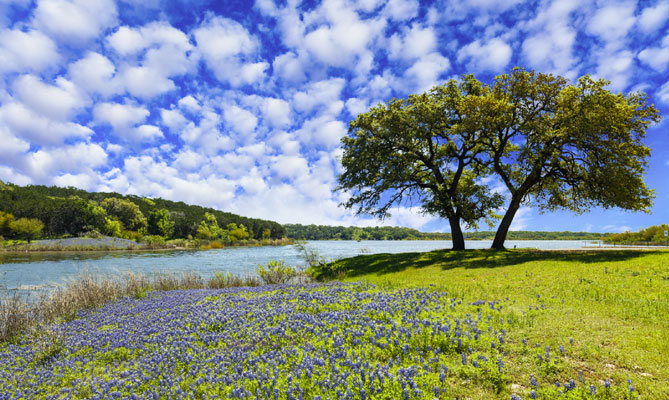Austin and nature go hand in hand like peas and carrots or campfire and marshmallows. In fact, 39 % of the city is covered by beautiful, majestic trees, ranking it among the cities with the largest and richest tree canopy in the US. Here are 10 things you almost certainly didn’t know about Austin trees.
10 Interesting Truths About Austin Trees
Are you someone who always finds researching and reading about greenery fascinating? Then these quick facts about trees in Austin Texas will truly blow your mind!
- Austin has approximately 35 million trees.
- Austin trees replacement value is estimated at $18 billion.
- The tree canopy covers 39 % of Austin city.
- Trees in Austin store about 7 million tons of carbon dioxide, which is valued at $250 million.
- Austin’s urban tree canopy has been found to reduce the cost of residential energy by close to $ 20 million per year.
- Austin’s trees remove 1, 250 tons of air pollution every year with an estimated value of $ 2.9 million.
- Trees in Austin Texas reduce surface water runoff by approximately 70 million cubic feet per year.
- Austin boasts more than 55 species of trees.
- About 59 % of trees in Austin have a diameter of less than 5 inches.
- About 88 % of trees in Austin are native to Texas.
What Are The Most Common Trees In Texas?
Live oaks are the most common trees in Texas. They grow up to 40 feet tall, and under ideal conditions, they can live for over 100 years, some surviving up to 500. Here are more trees that are native to Texas:
-
Cedar elm
Cedar elms are second in popularity in Texas, and like live oaks, they too can live for many, many years. They can reach anywhere between 50 and 80 feet high but pruning can help keep the trees a third or two-thirds of this height for homeowners with smaller yard spaces.
-
Texas Ash
Like the live oak, Texas ash grows up to a height of 40 feet. However, it has a relatively short lifespan, and only lasts 15 years, and if you are lucky, 20 years. To extend the life of a Texas ash tree, plant it in deep fertile soil and apply fertilizer at least three times a year.
-
Black Cherry
If you are looking for something that grows really fast, then black cherry could be a viable option. While the tree does not grow any taller than 45 feet, it produces high quality wood that is usually used to make toys and furniture. Black cherry is easy to grow and survives best in moist areas where the soil alkalinity is more moderate.
-
Shumard Oak
Shumard oak is yet another fast growing tree loved by Texans. It is relatively flood tolerant and drought resistant and if taken good care of, it can grow up to 90 feet tall and live well over 100 years. This tree prefers deeper soils but can grow in a wide range of soils including clay, sandy, caliche, or lime-stone based.
What Are The Worst Trees To Plant?

Siberian elms are the worst trees to plant in Texas. Not only are they vulnerable to Dutch elm disease but also suffer from severe leaf beetle manifestation each year. They also have weak wood, putting them at risk of wind damage. Here are more tree species you should absolutely avoid:
-
Black walnut
While black walnut produces quality wood for furniture, it also secretes toxins that kill nearby vegetable gardens and flowers. That’s not all; come fall, this tree drops fruits with hard seeds, which can be a nuisance to clean up.
-
Bradford Pear
Bradfords grow fast and produce beautiful white flowers during spring. Quick growth, however, equals weak wood, meaning, the tree can easily topple over during windy weather. Also, those white flowers look inviting, but their smell is not (some people say Bradford pear flowers smell like dirty diapers!)
-
Cottonwood
Cottonwood trees look good but they are certainly not a good investment. Why? First, they have a short lifespan, and second, they are weak and vulnerable to wind damage. Also, the cottony seeds produced by the tree pile up on everything and can clog air conditioners and gutters.
Tree Service Removal Overview
There is a lot to love about Austin’s trees, and if you live here and wish to spruce up your yard, this post could be all you need. We have listed a few tree species that do well in Texas and a few that you may want to avoid to give you a kick start. And in case you need help in tree trimming, pruning, or removal in the future, you can bank on our professional services.



